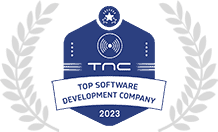Predictive analytics is transforming industries by using historical data to predict future outcomes. Machine learning plays a crucial role in enhancing these predictions, offering accuracy, speed, and adaptability. This article explores the deep integration of machine learning in predictive analytics, its applications, and how it influences decision-making in various sectors.
What is Predictive Analytics?
Predictive analytics uses statistical techniques, data mining, and machine learning to predict future outcomes based on historical data. It analyzes past patterns to forecast trends, behavior, or events. Key industries like finance, healthcare, and retail rely heavily on predictive analytics to make informed decisions, allocate resources, and improve customer experience.
Predictive models can be used to:
- Identify risks and opportunities
- Optimize marketing campaigns
- Predict equipment failures in industries
- Improve patient outcomes in healthcare
The integration of machine learning makes these predictions more accurate, allowing systems to “learn” from data and improve over time.
Machine Learning in Predictive Analytics
Machine learning (ML) is pivotal to modern predictive analytics. It automates the process of finding patterns in data, identifying correlations, and improving predictions based on feedback loops. Unlike traditional methods, machine learning models continue to improve as more data becomes available.
Key Benefits of Machine Learning in Predictive Analytics:
- Accuracy: Machine learning can process vast amounts of data, leading to more precise predictions.
- Adaptability: ML models adapt to new data, refining themselves without human intervention.
- Scalability: From small datasets to big data, ML algorithms scale efficiently.
ML is commonly used for predictive analytics in industries like healthcare (for disease prediction), finance (credit scoring), and retail (personalized marketing).
Common Machine Learning Algorithms in Predictive Analytics:
- Linear Regression: Predicts outcomes based on the relationship between variables.
- Decision Trees: Splits data into branches to reach conclusions.
- Neural Networks: Mimics the human brain, making it powerful for complex predictions.
- Random Forests: Combines multiple decision trees to improve prediction accuracy.
React Native Entities in Predictive Analytics
Though not directly related, React Native frameworks play a role in developing mobile applications that utilize predictive analytics. By integrating machine learning models within React Native apps, developers can provide predictive insights, such as user behavior forecasting and personalized recommendations.
Some of the React Native-related entities include:
- APIs for Machine Learning Integration: Developers can use APIs like TensorFlow.js to integrate ML models into React Native apps.
- Data Visualization: Libraries such as Victory and D3.js allow React Native developers to create predictive data visualizations.
- Cross-platform Compatibility: React Native’s ability to run predictive analytics solutions on both Android and iOS platforms increases accessibility.
Applications of Machine Learning in Predictive Analytics
Healthcare
Machine learning enhances predictive analytics in healthcare by predicting disease outbreaks, patient readmission rates, and potential treatment outcomes. Hospitals use these predictions to provide better care and reduce costs.
Examples:
- Predictive diagnostics: ML models can analyze patient data to predict diseases early.
- Personalized treatment plans: ML algorithms analyze large datasets to recommend personalized treatments based on patient history.
Finance
In the financial sector, predictive analytics is used for credit scoring, fraud detection, and market forecasting. Machine learning models analyze past financial data to predict stock prices or detect irregularities in transactions.
Examples:
- Fraud detection: ML algorithms detect anomalies in financial transactions that could indicate fraud.
- Risk management: Predictive models help in assessing the credit risk of borrowers.
Retail and E-commerce
Retailers use machine learning in predictive analytics to forecast demand, optimize inventory, and offer personalized customer experiences. By analyzing customer behavior data, businesses can predict shopping trends and improve marketing efforts.
Examples:
- Recommendation engines: Predict what a customer might buy next based on past behavior.
- Inventory management: Use predictive analytics to manage stock levels effectively.
Manufacturing
Machine learning in manufacturing predictive analytics is applied in predictive maintenance and quality control. It helps manufacturers predict equipment failure, reducing downtime and saving costs.
Examples:
- Predictive maintenance: ML algorithms predict when machines are likely to fail, allowing for proactive maintenance.
- Quality control: Analyze production data to predict defects before they occur.
Transportation and Logistics
Machine learning helps logistics companies optimize routes, reduce fuel consumption, and predict delivery times. Predictive analytics also improves fleet management and customer satisfaction.
Examples:
- Route optimization: Predict the most efficient delivery routes.
- Supply chain management: Predict disruptions in the supply chain before they happen.
How Machine Learning Enhances Predictive Models
Machine learning’s ability to analyze large datasets quickly and improve over time makes it indispensable in predictive analytics. Here are some ways machine learning enhances predictive models:
Self-improving Algorithms
Traditional statistical methods rely on human input, but machine learning algorithms self-improve. As new data is introduced, these models refine themselves, enhancing prediction accuracy without needing constant updates.
Handling Unstructured Data
Machine learning can process unstructured data, such as text, images, and videos, making it highly versatile. This ability is critical in predictive analytics as it opens up a broader range of data sources, improving the quality of predictions.
Real-time Predictions
ML models can provide predictions in real-time, enabling businesses to make quicker, data-driven decisions. This is especially beneficial in sectors like finance, where immediate reactions are crucial.
Reducing Human Bias
Human biases often skew traditional analytics. Machine learning models reduce this bias, ensuring that predictions are based purely on data patterns rather than subjective human judgment.
Challenges of Using Machine Learning in Predictive Analytics
Data Quality
Machine learning models depend heavily on the quality of data they are fed. Poor or incomplete data can lead to inaccurate predictions, undermining the benefits of predictive analytics.
Model Interpretability
One major challenge of machine learning models, especially complex ones like neural networks, is their interpretability. It’s hard for users to understand how these models arrive at specific predictions, creating a “black box” problem.
Ethical Concerns
ML models that make predictions based on sensitive data can raise ethical issues, especially when used in fields like healthcare and finance. Ensuring transparency and fairness in how these models are used is essential.
The Future of Machine Learning in Predictive Analytics
The future of machine learning in predictive analytics looks promising. As data availability increases and machine learning algorithms evolve, predictive analytics will become even more accurate and widespread across industries. Key trends include:
- AI-driven predictive models: Integration of artificial intelligence with predictive analytics for more advanced forecasting.
- Automated machine learning (AutoML): Tools that allow even non-experts to build machine learning models.
- Integration with IoT: Predictive analytics combined with Internet of Things (IoT) data will offer real-time insights across various sectors like transportation and smart cities.
Conclusion
Machine learning is revolutionizing predictive analytics, offering unmatched accuracy, adaptability, and scalability. From healthcare to finance, its applications are wide-ranging and impactful. By leveraging machine learning, businesses can make data-driven decisions that are more accurate, faster, and future-proof.
FAQs
- What is predictive analytics?
Predictive analytics uses historical data to forecast future trends, behaviors, and events. - How does machine learning improve predictive analytics?
Machine learning enhances predictive analytics by providing more accurate and scalable predictions that improve over time. - Can predictive analytics be used in healthcare?
Yes, predictive analytics is widely used in healthcare for predicting patient outcomes, disease outbreaks, and treatment effectiveness. - What industries benefit the most from predictive analytics?
Industries such as healthcare, finance, retail, manufacturing, and logistics benefit greatly from predictive analytics. - What machine learning algorithms are commonly used in predictive analytics?
Common algorithms include linear regression, decision trees, neural networks, and random forests. - How does machine learning handle unstructured data?
Machine learning can analyze unstructured data, such as text or images, using advanced algorithms. - What are the main challenges of machine learning in predictive analytics?
Challenges include data quality, model interpretability, and ethical concerns. - Can predictive analytics work with small datasets?
Yes, but machine learning algorithms typically perform better with larger datasets. - How does machine learning reduce bias in predictive analytics?
ML models rely purely on data patterns, reducing human biases in predictions. - What is AutoML?
AutoML refers to automated machine learning tools that allow users to create ML models without expert knowledge. - Can predictive analytics prevent fraud?
Yes, in finance, predictive analytics can help detect anomalies that may indicate fraudulent activity. - What role does real-time data play in predictive analytics?
Real-time data allows predictive models to make up-to-date predictions, crucial for industries like finance and logistics. - How is predictive analytics used in retail?
Retailers use predictive analytics to forecast demand, manage inventory, and provide personalized customer experiences. - What is the “black box” problem in machine learning?
The “black box” problem refers to the lack of interpretability in complex ML models, making it difficult to understand how decisions are made. - Can machine learning predict equipment failures?
Yes, machine learning models can analyze historical data to predict when equipment is likely to fail. - What is predictive maintenance?
Predictive maintenance uses machine learning to forecast equipment failures and schedule maintenance before breakdowns occur. - How do retailers use recommendation engines?
Retailers analyze customer data to predict and suggest products that customers are likely to purchase. - What is neural networks’ role in predictive analytics?
Neural networks mimic human brain processes, making them suitable for complex predictions involving vast datasets. - How does predictive analytics improve supply chain management?
Predictive models forecast disruptions, helping companies proactively manage supply chains. - Can small businesses use machine learning in predictive analytics?
Yes, many tools and platforms now make machine learning accessible to businesses of all sizes.
- Natural Language Processing (NLP): How AI Understands Human Language - October 4, 2024
- AI in Autonomous Vehicles: Driving the Future of Transportation - October 4, 2024
- The Role of AI and Automation in NetSuite: Enhancing Business Efficiency - October 4, 2024




















